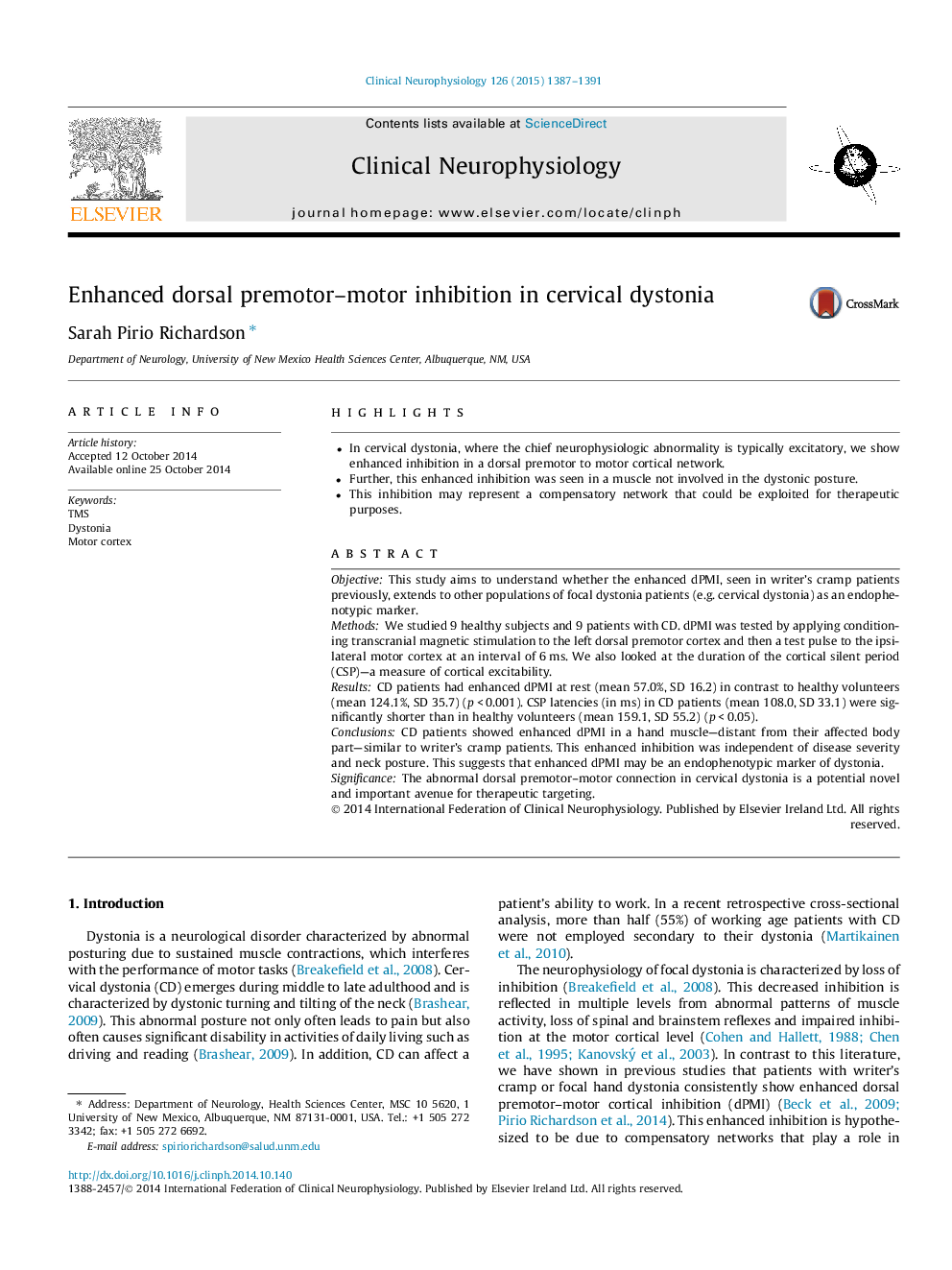| Article ID | Journal | Published Year | Pages | File Type |
|---|---|---|---|---|
| 6007735 | Clinical Neurophysiology | 2015 | 5 Pages |
â¢In cervical dystonia, where the chief neurophysiologic abnormality is typically excitatory, we show enhanced inhibition in a dorsal premotor to motor cortical network.â¢Further, this enhanced inhibition was seen in a muscle not involved in the dystonic posture.â¢This inhibition may represent a compensatory network that could be exploited for therapeutic purposes.
ObjectiveThis study aims to understand whether the enhanced dPMI, seen in writer's cramp patients previously, extends to other populations of focal dystonia patients (e.g. cervical dystonia) as an endophenotypic marker.MethodsWe studied 9 healthy subjects and 9 patients with CD. dPMI was tested by applying conditioning transcranial magnetic stimulation to the left dorsal premotor cortex and then a test pulse to the ipsilateral motor cortex at an interval of 6 ms. We also looked at the duration of the cortical silent period (CSP)-a measure of cortical excitability.ResultsCD patients had enhanced dPMI at rest (mean 57.0%, SD 16.2) in contrast to healthy volunteers (mean 124.1%, SD 35.7) (p < 0.001). CSP latencies (in ms) in CD patients (mean 108.0, SD 33.1) were significantly shorter than in healthy volunteers (mean 159.1, SD 55.2) (p < 0.05).ConclusionsCD patients showed enhanced dPMI in a hand muscle-distant from their affected body part-similar to writer's cramp patients. This enhanced inhibition was independent of disease severity and neck posture. This suggests that enhanced dPMI may be an endophenotypic marker of dystonia.SignificanceThe abnormal dorsal premotor-motor connection in cervical dystonia is a potential novel and important avenue for therapeutic targeting.
